
Screen shot from the opening ceremony.
Screen shot from the opening ceremony.
Add the number 24 to the list of things you can associate with the Beijing Winter Olympics, whose splendid opening ceremony took place at China's National Stadium in Beijing on Friday.
These are the 24th Winter Olympic Games. Also, February 4, the opening day, was this year's "Lichun," or the beginning of spring, the first of the 24 solar terms of the traditional lunar Chinese calendar that was an inspiration behind the ceremony.
The solar terms represent the 24 periods in the Chinese lunar calendar that show the changes in nature and climate. The ancient Chinese developed the calendar to guide agricultural production and reflect some natural phenomena and human life.
Apart from "Lichun", there are also "Lixia", or the beginning of summer; "Liqiu", or the beginning of autumn; and "Lidong", or the beginning of winter. Each of them symbolizes the start of four seasons, each of which is divided by six solar terms.
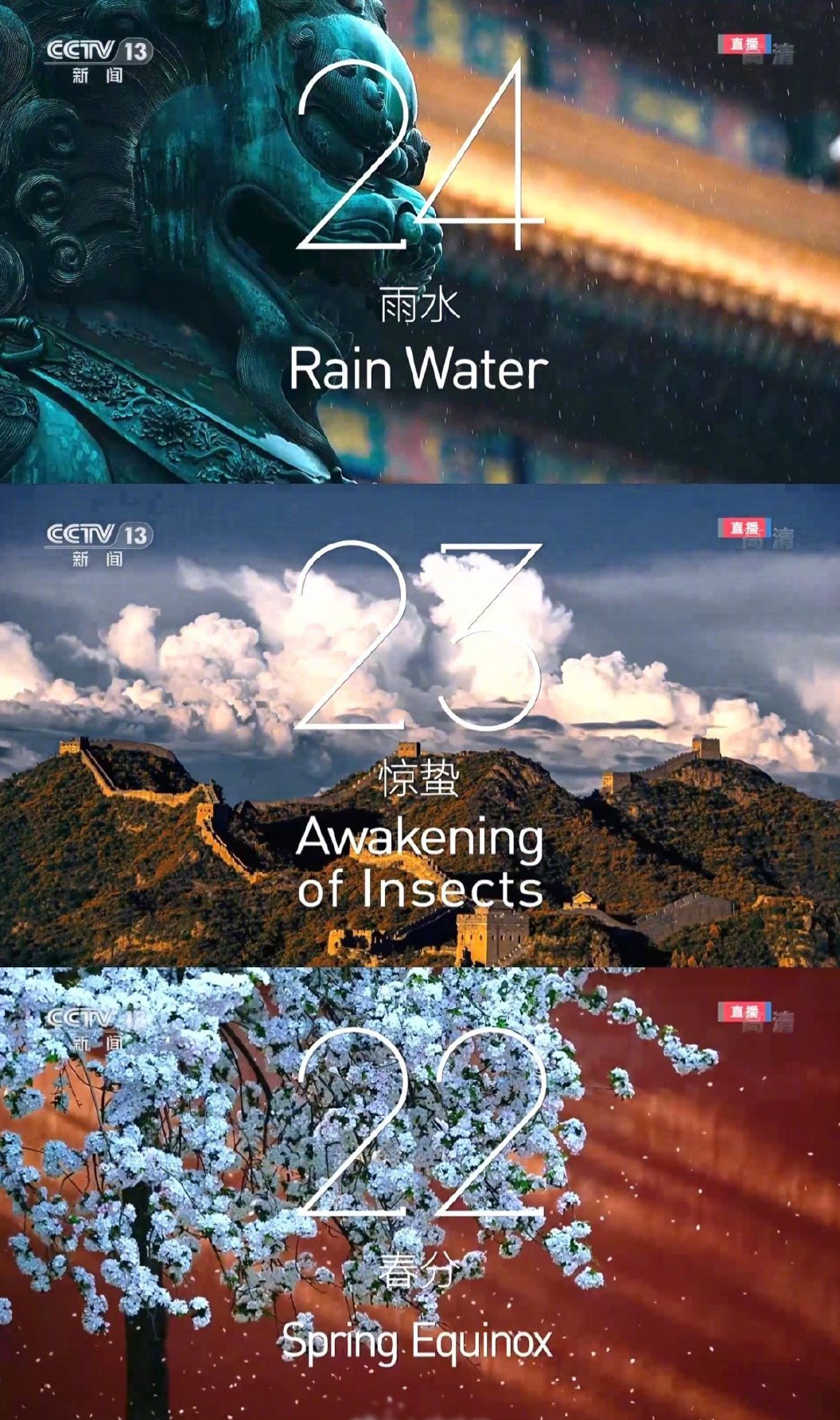
Screen shot from the opening ceremony.
Screen shot from the opening ceremony.
The second solar term of the year is "Yushui", or rainwater. The rain is vital for the growth of crops and other flora. From that day on, the rainfall increases to nourish the land. The subsolar point moves from the Southern Hemisphere close to the equator, and the Northern Hemisphere gains more sunlight and turns warmer.
After the period of rain comes the third solar term "Jingzhe", or awakening of insects. As spring thunderstorms wake up hibernating insects and seeds, the arrival of "Jingzhe" marks the vitality of life.
When "Chunfen", or spring equinox, arrives, the sun is exactly at the celestial longitude of 0 degrees (the equator) and day and night are approximately equal in length.
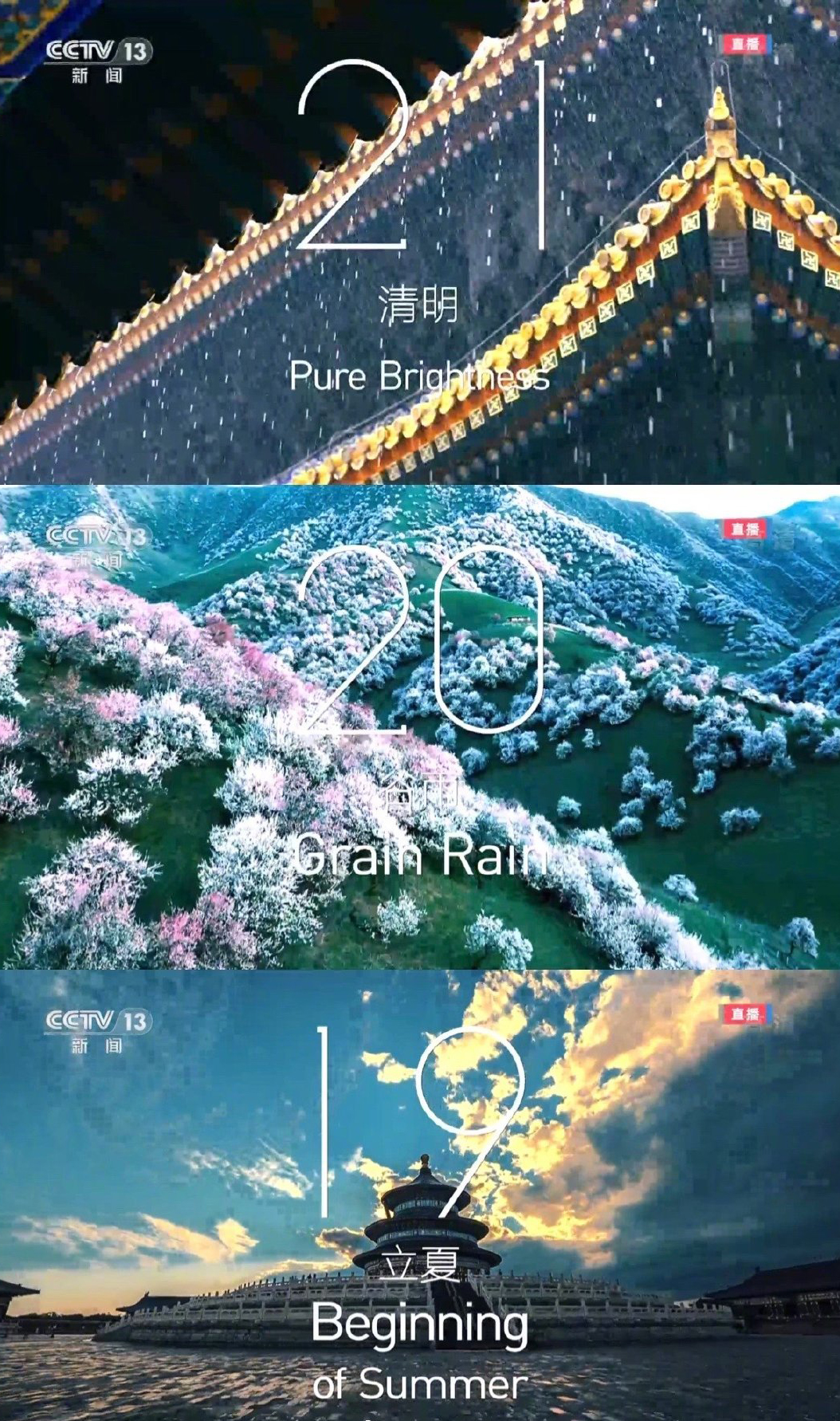
Screenshot from the Winter Olympics opening ceremony.
Screenshot from the Winter Olympics opening ceremony.
"Qingming" (pure brightness) and "Guyu" (grain rain) are the last two solar terms of spring. Both of them describe a warmer, moister and greener land. "Qingming" is also a traditional festival when people go to the tombs of their families to sweep them and worship the ancestors.
"Lixia", or the beginning of summer, falls on May 5 this year. As the seventh of the 24 solar terms, it signifies the end of spring, especially in southern China.
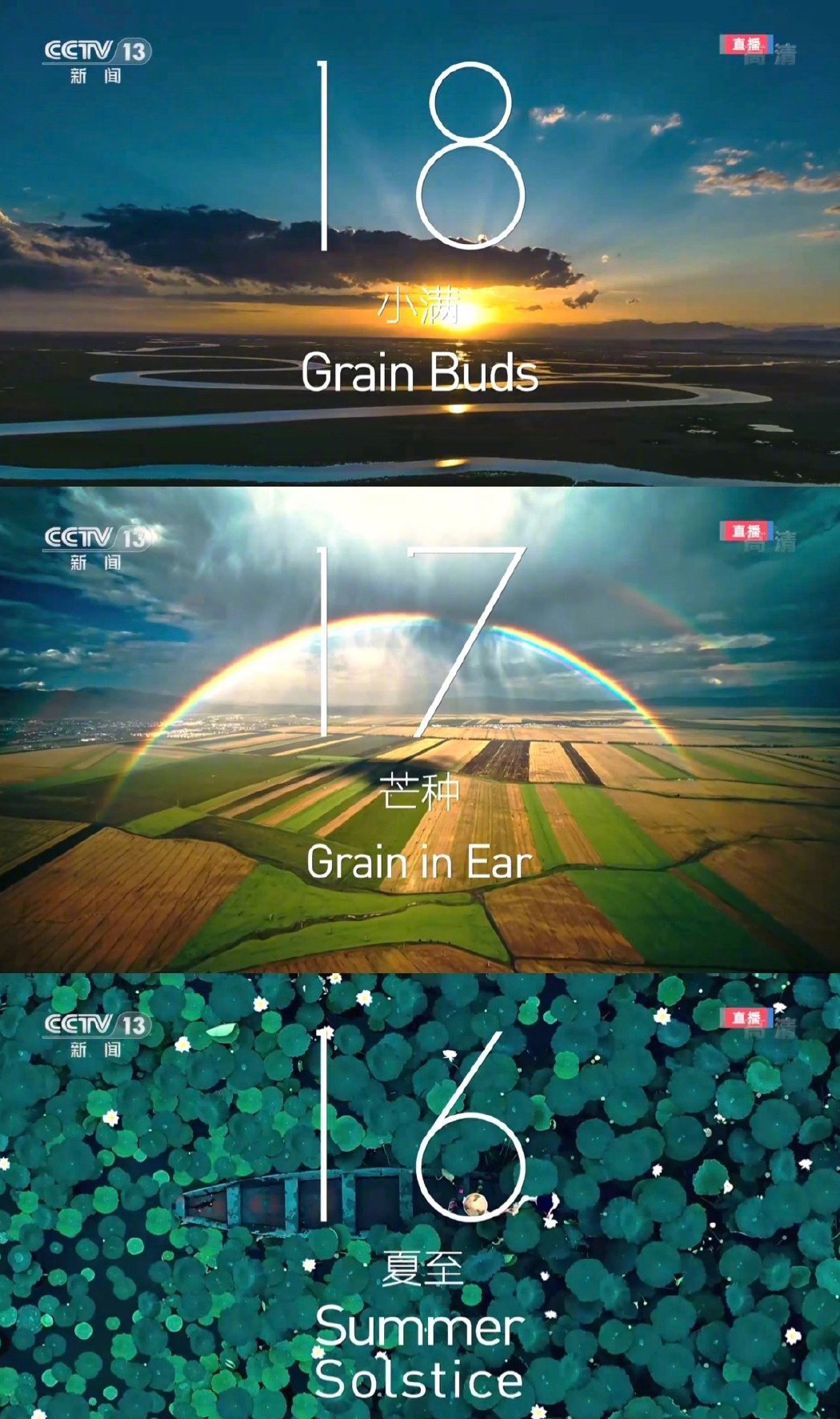
Screen shot from the opening ceremony.
Screen shot from the opening ceremony.
The second solar term of summer is "Xiaoman", or grain buds. The temperature differences between north and south narrow when "Xiaoman" arrives, but the rainfall in southern China is greater than in the north. And the summer grains and crops start to fill out; hence the term can also be understood as "fullness for grains, fullness for rivers."
The summer planting starts at "Mangzhong", or grain in ear. Fields, wheat seedlings, quiet mountains and singing birds offer the best interpretation of this period.
As time goes by, the sun eventually reaches its northernmost point of the year, almost directly above the Tropic of Cancer, marking the arrival of "Xiazhi", or summer solstice, when the daytime in the Northern Hemisphere is the longest for the year.
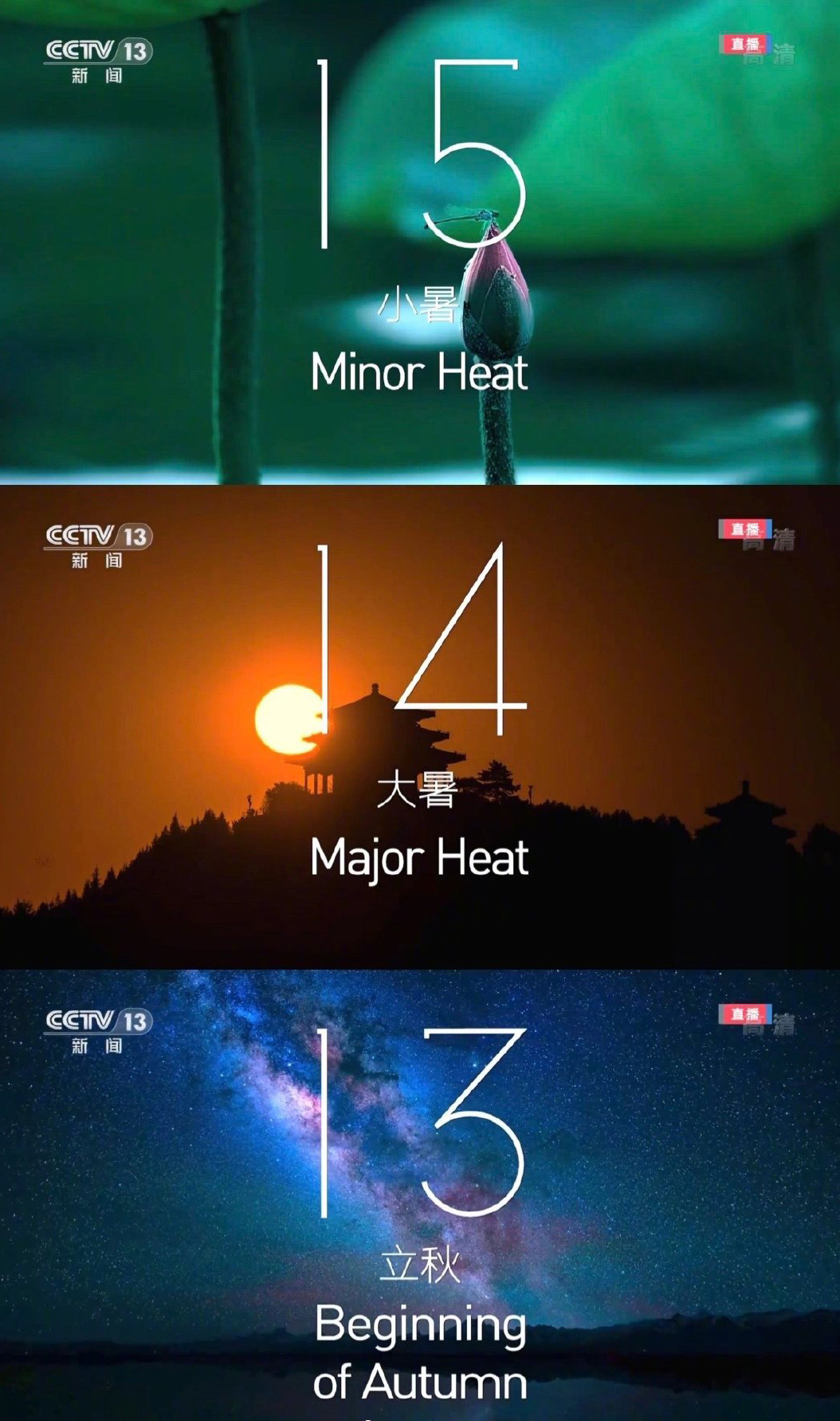
Screen shot from the opening ceremony.
Screen shot from the opening ceremony.
"Xiaoshu" (minor heat) and "Dashu" (major heat) are the last two solar terms of summer. This is when the average temperature is the highest, rainfall is the greatest, and thunderstorms are most frequent for most of the country.
"Liqiu", or the beginning of autumn will arrive on August 7 this year. Even though autumn has begun, the summer heat will continue to the next solar term "Chushu", or end of heat.

Screen shot from the opening ceremony.
Screen shot from the opening ceremony.
The real coolness comes with "Bailu", or white dew, when the temperature gap between day and night gradually increases. Two days after this year's "Bailu" is the Mid-Autumn Festival (September 10), another important occasion to reunite with family for Chinese people.
"Qiufen", or autumn equinox, is the same as "Chunfen" (spring equinox) when day and night equally divide the whole day. Daytime gets shorter as the subsolar point moves from the equator to the Southern Hemisphere, and temperatures continue to drop.
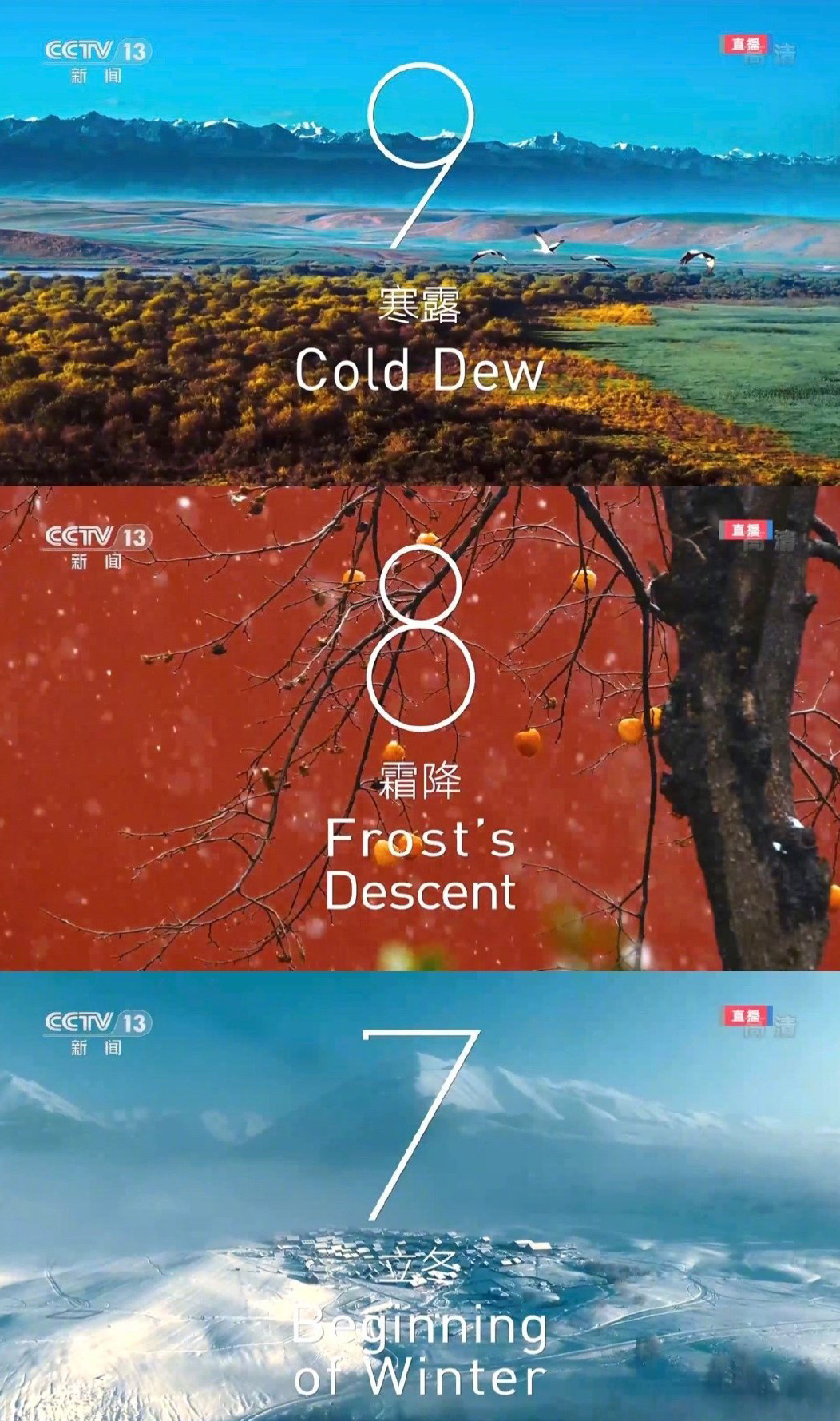
Screen shot from the opening ceremony.
Screen shot from the opening ceremony.
"Hanlu" (cold dew) and "Shuangjiang" (frost's descent) mean the weather is gradually reach dew point, and then to frost point. It's an early warning of winter.
Autumn leaves, winter comes, and time flies. November 7 is this year's "Lidong", or the beginning of winter.

Screen shot from the opening ceremony.
Screen shot from the opening ceremony.
"Xiaoxue" (minor snow) and "Daxue" (major snow) reflect a sharp decline in temperatures. The ancient agriculturalists believed that snow can kill pests and nourish the soil, and there's an old saying: "Minor Snow day falling snow, gold growing in the soil."
"Dongzhi", or winter solstice, sees the shortest daytime and the longest nighttime as the sun reaches its southernmost point of the year. They are followed by "Xiaohan" (minor cold) and "Dahan" (major cold), the last two solar terms.

Screen shot from the opening ceremony.
Screen shot from the opening ceremony.

